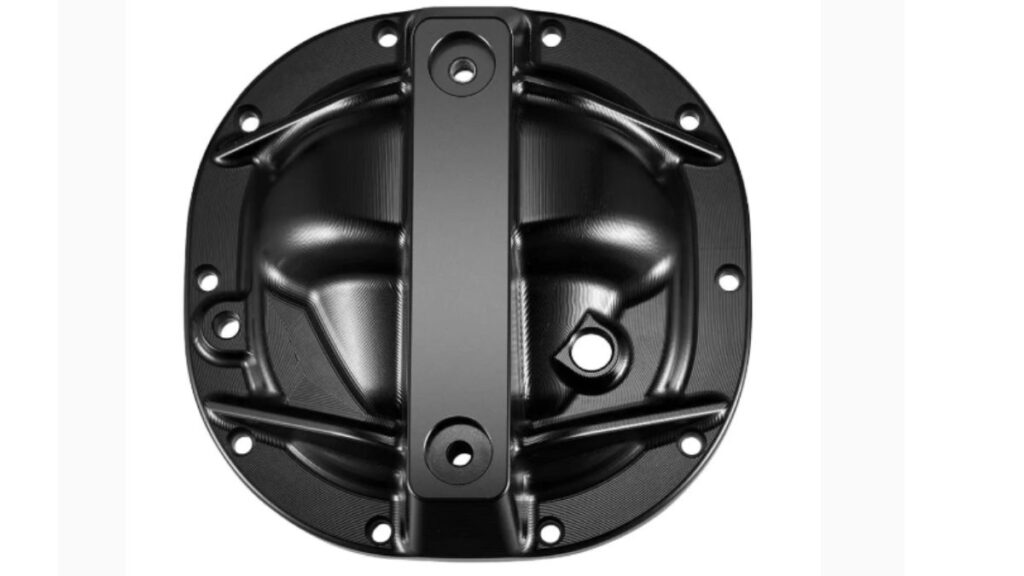In high-performance heavy-duty vehicles the engine and transmission to the axles and wheels every component matters. Your Ford 8.8 differential is designed to handle demanding conditions, but it relies on a well-maintained differential cover for peak performance. It allows the wheels to rotate at different speeds and provides a balance of durability and efficiency, making it suitable for both stock and modified vehicles. If you don’t have a differential then turning would be awkward and potentially damaging to your vehicle or cause an accident. So, it’s cheap to get but most importantly easy to narrow. Take the long side off and put a short tube in its place. It is a best practice to use valve cover as well to prevent oil leaks, protect the valve train from dirt and debris, and reduce noise
What Is the Ford 8.8 Differential?
The Ford 8.8 differential was first introduced in 1983 as a stronger, more modern replacement for earlier Ford designs. It is popular among Ford vehicles due to its robust construction and high torque capacity. Over the years, the 8.8 diff has appeared in a wide range of Ford vehicles.
Common vehicles that use the Ford 8.8 differential include:
- Ford Mustang
- Ford F-150 (half-ton pickups)
- Ford Explorers
- Ford Ranger (later models)
- Ford Crown Victoria
Why change out your diff cover?
The factory diff covers are too thin for abuse on the trail. One of the common factory diff cover failures occurs when the edge gets peeled up from a rock sliding across the diff. Peeling can cause the differential fluid to leak out unknowingly and the result could be damaging the gears when you hit the road to drive home. Another failure of factory diff covers are from bending the cover into the ring gear which rubs a hole through. The result here is the same with differential fluid leaking out. One other failure is actually puncturing the factory diff cover with a sharp rock. Again resulting in differential fluid leaking out. That’s why you need a heavy duty diff cover. Spelabautoparts tailored Diff Covers address the failures I have mentioned to ensure your ring and pinion gear sets are well protected.
An Upgrade will improve Durability and provides critical protection.
Thicker construction and reinforced ribs offer superior impact resistance, helping protect your differential from damage and costly repairs.
Better Cooling and Lubrication
Differential fluid can get hot—especially under high loads such as:
- Off-roading
- Towing
- High-speed driving
Inclusion of drain and fill fluid plugs makes it easier to perform regular maintenance
Increased Fluid Capacity
Many aftermarket covers hold more fluid than stock versions. This provides better lubrication and thermal stability under extreme conditions. It’s a major advantage for those who:
- Tow heavy trailers
- Race their vehicles
- Go off-road frequently
Increased fluid capacity helps extend the life of both the fluid and the differential components.
Basic Function
At its core, the differential distributes engine power to the wheels while allowing them to spin at different speeds. This is crucial during cornering since the outside wheel must travel a longer distance than the inside wheel.
The differential housing is a metal casing that contains all the gears and fluid required for smooth operation. The diff cover—bolted onto the rear of the housing—serves as both a structural component and a service access point. It also plays a role in protecting the internal gears from debris and damage.
What Is a Diff Cover?
A differential cover (commonly called a diff cover) is the removable metal plate that seals the back of the differential housing. It allows easy access for maintenance while keeping lubricating fluid inside and external contaminants out.
Materials used for diff covers include:
- Stamped steel (most factory-installed covers)
- Aluminum (common in aftermarket performance covers)
- Cast iron (for heavy-duty aftermarket applications)
Purpose
A diff cover serves several key purposes:
- Sealing the differential housing to prevent fluid leaks
- Holding differential fluid, which lubricates the gears and bearings
- Protecting the internal components from debris, rocks, and impacts—especially important for off-road vehicles
While the factory-installed covers are adequate for normal driving, they do have limitations that can become an issue in more demanding situations.
Stock Diff Cover vs Aftermarket Diff Cover
Stock Diff Cover
Factory-installed (OEM) diff covers are typically made of thin stamped steel. They are cost-effective to manufacture and perfectly adequate for vehicles that are driven on paved roads.
However, OEM diff covers have several limitations:
- Thin material is prone to bending or denting upon impact.
- Poor heat dissipation can lead to higher differential fluid temperatures under load.
- Limited protection against off-road hazards such as rocks or stumps.
For regular highway driving, the stock cover usually performs fine. But if you venture off-road, tow heavy loads, or increase your vehicle’s power output, an upgrade is worth considering.
Aftermarket Diff Covers
Aftermarket diff covers address the weaknesses of stock covers by offering:
- Thicker metals for superior impact resistance
- Finned aluminum designs to promote cooling
- Reinforced structural designs that improve the rigidity of the entire differential assembly
- Extra fluid capacity, which helps maintain optimal lubrication
- Integrated drain and fill plugs for easier, cleaner maintenance
- Built-in cooling fins to lower fluid temperatures during demanding use
These features make aftermarket diff covers a popular upgrade for off-roaders, racers, and towing enthusiasts alike.
Choosing the Right Aftermarket Diff Cover
Factors to Consider
When selecting an aftermarket diff cover, consider the following:
- Material
- Aluminum: Lightweight and excellent cooling
- Steel: Durable and cost-effective
- Cast iron: Ultra-strong for extreme use
Application
- Daily driving: Basic aluminum or steel
- Towing: Reinforced with cooling fins and extra capacity
- Off-road: Heavy-duty steel or cast iron with maximum protection
- Racing: Lightweight aluminum with excellent cooling
Compatibility
Make sure the cover fits your specific Ford 8.8 model. There are subtle differences across vehicle years and types.
- Brand reputation and reviews
- Stick with trusted brands known for quality and reliability.
Budget
Prices vary, so choose a cover that balances cost with your performance needs.
Installation Overview
We strongly recommend tacking the pieces together and test fitting it onto the axle before finish welding. It is best to use pipe thread tape for the fill plug.
Tools Required
Installing an aftermarket diff cover is a straightforward DIY project. You’ll need:
- Basic hand tools (socket set, wrenches)
- Torque wrench (for proper bolt tightening)
- Gasket or RTV sealant (depending on cover design)
- Drain pan (to catch old fluid)
Basic Steps
- Drain the old fluid into the drain pan.
- Remove the stock cover by unbolting it.
- Clean the mating surface thoroughly to ensure a good seal.
- Install the new cover using the supplied gasket or RTV sealant.
- Torque the bolts to the manufacturer’s specifications.
- Refill with fresh fluid through the fill plug.
- Check for leaks and test drive the vehicle.
- Proper torqueing and sealing are essential to avoid leaks.
Final Thoughts
Upgrading your Ford 8.8 diff cover can provide numerous benefits:
- Improved protection for off-road use
- Better cooling and lubrication under load
- Easier maintenance with built-in drain and fill plugs
- Increased fluid capacity for demanding driving
For daily drivers who stick to the pavement, the stock cover is usually sufficient. But if you tow, race, or go off-road, an aftermarket diff cover is a worthwhile investment.
Assess your driving habits and maintenance preferences before deciding. An upgrade is an inexpensive way to protect one of your vehicle’s most important components.
FAQs
Q1: Is a diff cover upgrade necessary for daily driving?
No, but it can offer added protection and improved cooling for daily driving.
Q2: Will an aftermarket diff cover void my warranty?
No.
Q3: How much does a good cover cost?
Depending on material and features Ford 8.8 diff cover can cost between $75 to $250.
4: Can I install an aftermarket diff cover myself?
Yes. It’s a DIY-friendly project requiring only basic tools and mechanical know-how.
Q5: How often should I change differential fluid with an aftermarket cover?
Follow your vehicle’s recommended service interval. Aftermarket covers make more frequent changes easier, which can benefit performance and longevity.
Searching for more informative articles like this? Then, please keep browsing our blog!







